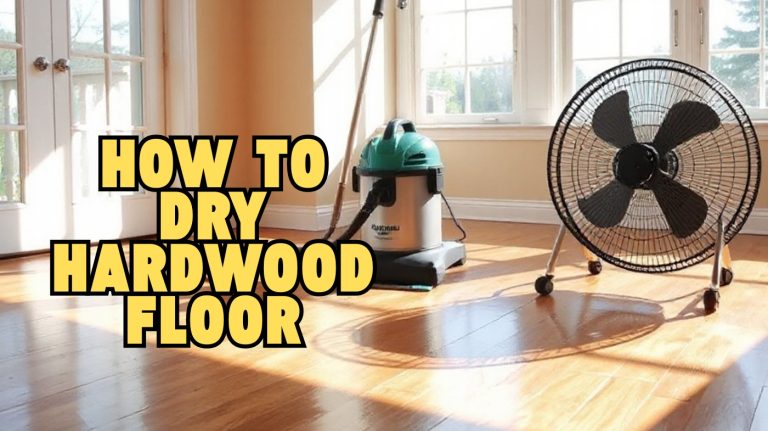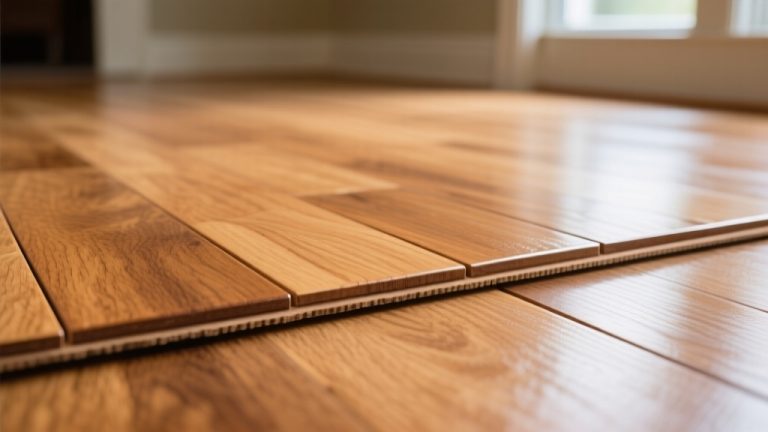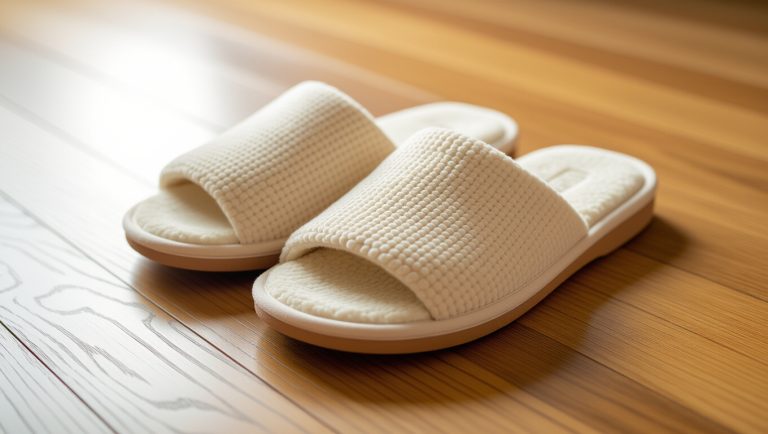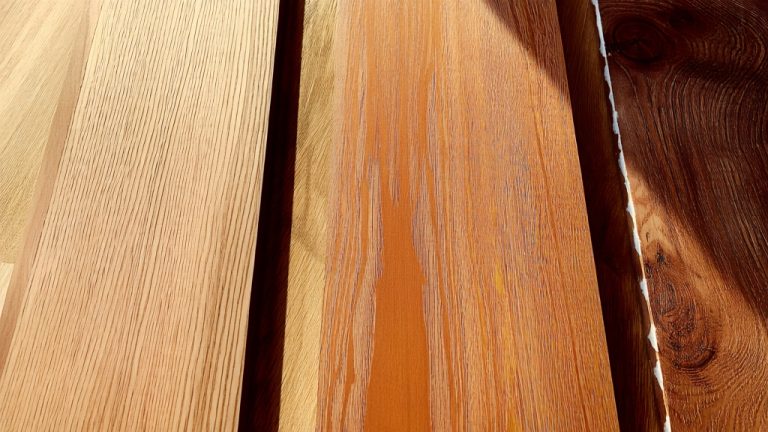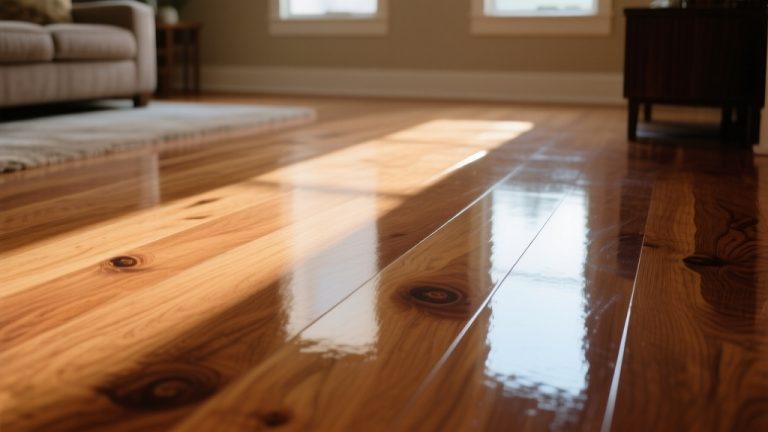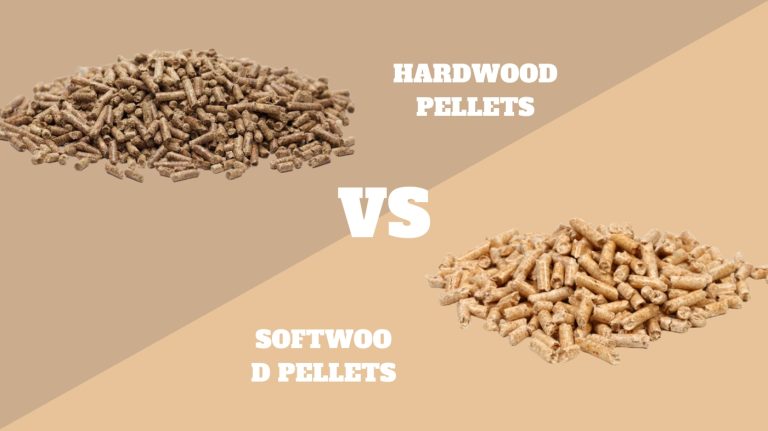Engineered Hardwood vs Prefinished Hardwood: Best Choice
If you’re choosing between engineered hardwood and prefinished hardwood, consider your environment and needs. Engineered hardwood offers real wood veneers with better moisture resistance and can be refinished a few times, making it ideal for basements or humid areas.
Prefinished hardwood comes with a durable factory finish that’s ready to install and lasts longer without refinishing, perfect for quick, hassle-free setups. Both look great, but your choice depends on durability, maintenance, and installation preferences.
- One case covers 19.69 square feet
- Premium quality real hardwood with hand-scraped+french bleed surface and eased ends and edges
- For residential use, planks feature a 9-ply balanced engineered construction for superior strength
- One 9″ Sample Piece of Hurst Hardwoods European French Oak Prefinished Engineered Hardwood Flooring
- 7 1/2″ x 1/2″ Wide Plank w/3mm Wear Layer
- Color is “Grey Ridge”; Lightly Wire Brushed
Key Takeaways
- Engineered hardwood features a real wood veneer over layered core, offering better moisture resistance and refinishing options than prefinished hardwood.
- Prefinished hardwood comes with a factory-applied, durable finish that lasts about 30% longer and requires less immediate maintenance.
- Installation of engineered hardwood suits diverse subfloors including concrete and often needs professional help, while prefinished hardwood is more DIY-friendly.
- Engineered hardwood can be sanded and refinished multiple times if the veneer is thick, whereas prefinished hardwood has thinner wear layers limiting refinishing.
- Prefinished hardwood offers a consistent, uniform appearance ready for immediate use, while engineered hardwood provides more natural grain variation and customization.
Comparison Table Between Engineered and Prefinished Hardwood
| Feature | Engineered Hardwood | Prefinished Hardwood |
|---|---|---|
| Construction | Real wood veneer over layered core | Solid wood with factory finish |
| Moisture Resistance | Better resistance – ideal for basements | Standard resistance – needs protection |
| Cost | $1.49 – $5.39 per sq ft | $5 – $28 per sq ft |
| Installation | Real wood veneer over a layered core | DIY-friendly – simpler process |
| Refinishing | Can be sanded multiple times | Limited refinishing options |
| Durability | Superior stability – resists warping | More flexible – over concrete is possible |
| Ready to Use | Requires finishing time | 30% longer-lasting factory finish |
Engineered Hardwood Overview
While engineered hardwood looks like solid wood on the surface, it’s a carefully crafted composite designed for stability and durability.
You’ll find a thin top layer of real hardwood veneer fused over multiple core layers, often plywood or high-density fiberboard, arranged with grain directions crossing each other. To protect the surface during cleaning, use appropriate attachments such as soft roller cleaner heads with vacuums to avoid scratching.
This structure enhances resistance to warping and cracking, outperforming solid hardwood in fluctuating moisture and temperature. The layered plywood core offers better moisture resistance, making engineered hardwood ideal for spaces like basements or over concrete slabs where solid wood risks damage.
Additionally, the backing layer balances the floor, preventing cupping or swelling. When you choose engineered hardwood, you get the authentic look of wood combined with superior dimensional stability, making it a practical solution for many environments.
Engineered hardwood is composed of three layers: a hardwood top, a core layer often made from Hevea Brasiliensis, and a bottom timber layer, which together reduce the effects of moisture and temperature changes.
Characteristics of Prefinished Hardwood
Engineered hardwood offers stability through its layered construction, but when it comes to finishing, prefinished hardwood stands out for its factory-applied coatings.
You’ll find that prefinished floors are sanded, stained, and sealed with multiple layers, often five or more, of durable urethane or polyurethane finishes infused with aluminum oxide.
These finishes cure under UV light in a controlled, dust-free environment, ensuring uniform color and a tough, scratch-resistant surface that lasts about 30% longer than site-finished floors. The factory application also helps minimize formaldehyde emissions, contributing to better indoor air quality.
Since the finish is complete before delivery, installation is faster and cleaner, letting you use the floor immediately. This also means the overall cost can be lower due to reduced finishing expenses. Plus, prefinished hardwood reduces onsite VOC exposure, making it healthier for indoor air quality.
Prefinished hardwood ensures quicker installation and healthier indoor air by minimizing onsite VOCs.
Uniform sheen and color consistency give your floor a polished, professional look, though some customization options are limited compared to site-finished hardwood.
Comparing Installation Processes
Because proper installation is key to hardwood flooring performance, understanding the differences between engineered and prefinished hardwood installation processes can help you make an informed choice.
Prefinished hardwood requires a smooth, dry subfloor and can be installed via nail-down, glue-down, or floating methods, eliminating on-site finishing for faster installation. Ensure the subfloor is properly prepared and free of dust to avoid issues during installation, as dust can affect adhesion and finish quality.
Engineered hardwood offers more flexibility, installing over concrete with adhesive after humidity testing, or using nail-down or floating methods depending on the product. It is important to test concrete humidity to ensure compatibility before installation.
You’ll need to acclimate both types properly to prevent expansion issues.
Engineered hardwood glue-down demands careful adhesive application, rolling for bonding, and working in small sections, while nail-down requires pre-drilling and precise nailing. Waiting for finishes to fully cure before proceeding with additional work is essential to protect the flooring and ensure durability.
Prefinished hardwood’s simpler installation suits experienced DIYers better, whereas engineered hardwood calls for skilled labor and specialty tools to ensure a flawless fit.
Additionally, protecting floors during subsequent painting or finishing tasks with drop cloths or protective sheets can prevent damage and simplify cleanup.
Durability and Maintenance Considerations
Though both engineered and solid hardwood floors offer timeless beauty, their durability and maintenance needs differ considerably due to construction and finish.
Engineered hardwood’s layered design enhances moisture resistance and reduces warping risks, making it better suited for humidity-prone areas. Its factory-applied aluminum oxide finish also boosts initial wear resistance, cutting down early maintenance.
Solid hardwood, however, has a thicker wear layer, allowing multiple refinishing cycles that extend its lifespan substantially. But it demands careful protection from water and humidity to avoid damage.
Both require regular cleaning to prevent scratches, and immediate spill cleanup is essential. While engineered hardwood tolerates moisture fluctuations better, you’ll need to refinish it cautiously to avoid exposing the core.
Avoid using double-sided carpet tape on hardwood floors, as its adhesives can cause discoloration, residue buildup, and surface damage.
Cost Analysis and Value Comparison
Understanding how durability and maintenance affect your flooring choice naturally leads to examining the costs involved. Engineered hardwood typically costs between $1.49 and $5.39 per square foot and is easier to install yourself, saving on labor.
It also offers better water resistance compared to solid hardwood, making it a practical choice in moisture-prone areas. Regular cleaning with a damp mop and vinegar solution can help maintain engineered hardwood’s finish without damage.
Solid hardwood ranges from $5 to $28 per square foot and usually requires professional installation, raising expenses. While engineered hardwood needs moderate upkeep and can be refinished once or twice, solid hardwood demands more maintenance but can be refinished multiple times, extending its life.
You’ll find that solid hardwood retains value better over time due to its authentic look and durability. Additionally, engineered hardwood’s efficient manufacturing and material use make it more affordable and sustainable.
Aesthetic Options and Longevity Factors
When choosing between engineered and prefinished hardwood, you’ll want to contemplate both the aesthetic options and how long your floor will last.
Here’s what to weigh:
- Aesthetic Variety: Engineered hardwood offers diverse styles and finishes, including distressed and wire-brushed looks, with some options for on-site refinishing if you pick thicker veneers. Prefinished hardwood delivers a consistent, factory-applied finish but limits customization after installation. Additionally, engineered hardwood showcases authentic wood grain and natural variation, providing a genuine wood look that prefinished hardwood may lack.
- Durability: Prefinished floors have tough, scratch-resistant coatings and immediate moisture protection. Engineered hardwood’s lifespan depends on veneer thickness and boasts superior moisture resistance due to its plywood core. This makes engineered wood especially suitable for moisture sensitive areas where solid wood might warp.
- Refinishing Potential: Engineered hardwood with thick veneers can be sanded multiple times, extending its life. In contrast, prefinished floors usually require less frequent refinishing but have thinner wear layers.
Frequently Asked Questions
Can Engineered Hardwood Be Installed Over Radiant Heating Systems?
Yes, you can install engineered hardwood over radiant heating systems. Its layered construction provides excellent stability, reducing risks of warping or gapping from temperature changes.
You’ll want to follow manufacturer guidelines carefully, including maximum floor temperature limits, and consider installation methods like floating or glue-down to optimize heat transfer.
Installing the wood crosswise to heating panels enhances performance. This approach guarantees your floor stays durable and comfortable with radiant heat.
What Environmental Impacts Do Engineered vs Prefinished Hardwood Have?
You’ll find engineered hardwood has a smaller carbon footprint since it uses less solid wood by layering thin veneers over recycled cores, conserving resources and reducing deforestation.
Prefinished hardwood, usually solid wood finished at the factory, doesn’t cut raw wood demand and impacts ecosystems more. While prefinished reduces on-site waste, engineered hardwood’s efficient production and potential for longer life make it a greener choice overall.
Are There Differences in Allergen or VOC Emissions Between the Two Types?
You’ll find fascinating fluctuations in fumes and allergens between flooring types. VOC emissions vary vastly, depending on adhesives and finishes; engineered options might emit more initially if low-quality glue’s used.
However, prefinished floors typically feature fully cured, factory-applied finishes, curbing chemical off-gassing and dust accumulation. Both types stay safe for allergy sufferers when sealed and maintained properly, so selecting low-VOC products and ensuring good ventilation keeps your indoor air clean and comfortable.
Can Pets or Heavy Furniture Damage Engineered Hardwood Differently Than Prefinished?
Imagine your dog’s claws scratching floors daily; engineered hardwood’s tough, multi-layer finish often resists these better than some solid woods.
Heavy furniture also presses differently engineered floors, spreads weight evenly, reducing dents, while solid hardwood might dent more easily without pads. However, if scratches or dents happen, your repair options depend on veneer thickness and finish durability.
Moisture Matters: Choosing the Right Flooring for Your Space
Choosing between engineered hardwood and prefinished hardwood is like picking the right tool for your home’s story. Engineered hardwood offers stability and moisture resistance, perfect for unpredictable spaces, while prefinished hardwood shines with its ready-to-go beauty and easier installation.
Think of it as choosing between a trusty Swiss Army knife and a sleek, polished pen, both get the job done, but your space’s needs will guide which fits best.
- Solid Wood Flooring
- Tongue & groove milling profile
- Nail/Staple
Last update on 2025-12-19 / Affiliate links / Images from Amazon Product Advertising API






